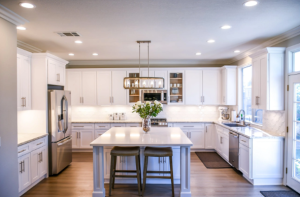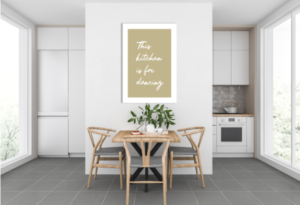As we age, it becomes important to ensure our homes are safe and comfortable. For seniors who wish to live independently or age in place, making certain modifications can greatly improve safety and accessibility. This guide will help you understand the various changes you can make to create a senior-friendly home.
Financial Assistance for Home Modifications
Making your home senior-friendly can be costly, but there are financial assistance options available. Many grants and programs offer aid for home modifications. For example, the government provides various programs to help seniors fund these changes. Additionally, some insurance policies might cover specific modifications. Home care assistance programs can also support these efforts by offering both financial aid and practical help with making the changes. Once the changes are made home care in Dayton can also help to maintain living areas and fixtures.
Many grants and programs offer aid for home modifications. For example, the government provides various programs to help seniors fund these changes. Additionally, some insurance policies might cover specific modifications. Home care assistance programs can also support these efforts by offering both financial aid and practical help with making the changes. Once the changes are made home care in Dayton can also help to maintain living areas and fixtures.
General Home Modifications
Several general modifications can make any home safer for seniors:
- Home Automation Systems: Install smart home devices for easier control of lights, thermostats, and security systems. Smart systems can be controlled remotely or via voice commands, adding convenience and safety.
- Widening Doorways: Make doorways wider to accommodate wheelchairs and walkers. This modification ensures smoother and safer transitions between rooms.
- Lowering Switches and Thermostats: Place switches and thermostats at accessible heights. This allows seniors to easily control their home environment without needing to stretch or bend.
Living Area Modifications
Living areas should be safe and easy to navigate:
- Decluttering for Clear Pathways: Keep walkways clear of obstacles to reduce tripping hazards. Remove unnecessary furniture and objects that can obstruct movement.

- Proper Furniture Height: Ensure chairs and sofas are at a height that makes it easy to sit down and stand up. Consider adding risers to low furniture to make them more accessible.
- Lever-Style Door Handles: Replace traditional door knobs with lever-style handles. This simple change can make doors easier to open for those with limited hand strength.
- Improved Lighting Solutions: Use bright, energy-efficient lighting to enhance visibility. Place lamps in strategic locations to eliminate dark corners and reduce the risk of falls.
Bedroom Modifications
Making the bedroom safe and comfortable is crucial:
- Adjustable Bed Height and Bed Rails: Adjust the bed height to make it easy to get in and out. Install bed rails to prevent falls. These rails can also provide support when getting up or lying down.
- Bedside Commode: Consider a bedside commode for those with limited mobility. This can reduce the need for nighttime trips to the bathroom, minimizing fall risks.
- Proper Lighting for Nighttime Safety: Place lamps within easy reach of the bed and use night lights to illuminate the way to the bathroom. Motion-activated lights can also be helpful for seniors who get up frequently during the night.
Bathroom Modifications
Bathrooms can be hazardous for seniors, but a few changes can improve safety:
- Non-Slip Shower Floors and Grab Bars: Use non-slip shower mats and install grab bars for stability. These bars provide support when entering and exiting the shower.
- Walk-In Tubs and Shower Chairs: Walk-in tubs make bathing safer. Shower chairs provide a place to sit while bathing. These modifications reduce the risk of slipping and falling in the bathroom.
- Lever-Style Faucets and Hand-Held Showerheads: These are easier to use and control water flow. Hand-held showerheads allow for better control and ease of use while seated.
- Shower Seats for Added Safety: Shower seats can reduce the risk of slipping and falling. They provide a stable place to sit while bathing, making the process safer and more comfortable.
Kitchen Modifications
Kitchens should be designed for ease of use and safety:
- Lower Countertops and Pull-Down Shelves: Make storage and preparation areas accessible. These modifications allow seniors to reach items without straining or using step stools.

- Lever-Style Handles for Cabinets and Faucets: These are easier to use than knobs. They require less force to operate, making them more senior-friendly.
- Easy-to-Reach and Accessible Storage: Organize frequently used items within easy reach. Use pull-out shelves and lazy Susans to make accessing items easier.
- Non-Slip Mats and Flooring: Use non-slip mats to prevent falls. Place mats near sinks and cooking areas where water and spills are common.
Entryway Modifications
Entryways should be accessible and safe:
- Ramps for Wheelchair Access: Install ramps to make entry easier for those using wheelchairs or walkers. Ensure the ramps have non-slip surfaces for added safety.
- Handrails on Stairs and Entryways: Add handrails for additional support. These provide stability when navigating steps and can prevent falls.
- Lever-Style Door Handles: Make it easier to open and close doors. These handles are more accessible for seniors with limited hand strength.
Hallway Modifications
Hallways should be safe and easy to navigate:
- Installation of Handrails: Add handrails along hallways for support. These rails provide stability and can help prevent falls.
- Clear and Widened Pathways: Keep hallways clear of obstacles and widen them if necessary. Remove clutter and ensure there is enough space for easy movement.
Outdoor Modifications
Don’t forget about the outside of the home:
- Pathway Lighting: Ensure pathways are well-lit to prevent falls. Use solar-powered lights to illuminate walkways and steps.
- Secure Railings and Non-Slip Surfaces: Use non-slip materials on outdoor stairs and walkways, and secure railings for support. These modifications can help prevent accidents and improve safety.
Home Technology Integration
Integrating technology can further enhance safety and convenience:
- Smart Home Devices for Monitoring and Safety: Use devices like smart doorbells, cameras, and sensors to keep an eye on the home. These devices can alert caregivers or family members if there are any issues.

- Voice-Activated Assistants: Devices like Amazon Alexa or Google Home can control lights, thermostats, and more with simple voice commands. This technology can make daily tasks easier and provide quick access to assistance if needed.
Conclusion
By making these modifications, seniors can enjoy a safer, more comfortable home environment. Whether you are a senior looking to live independently or a loved one wanting to help, these changes can make a big difference in ensuring safety and ease of living.
Note: This is a collaborative post with thanks to Pat Baker who enjoys home renovations, has experience with multigenerational living, and writes for home care agencies in Ohio.

No Comments